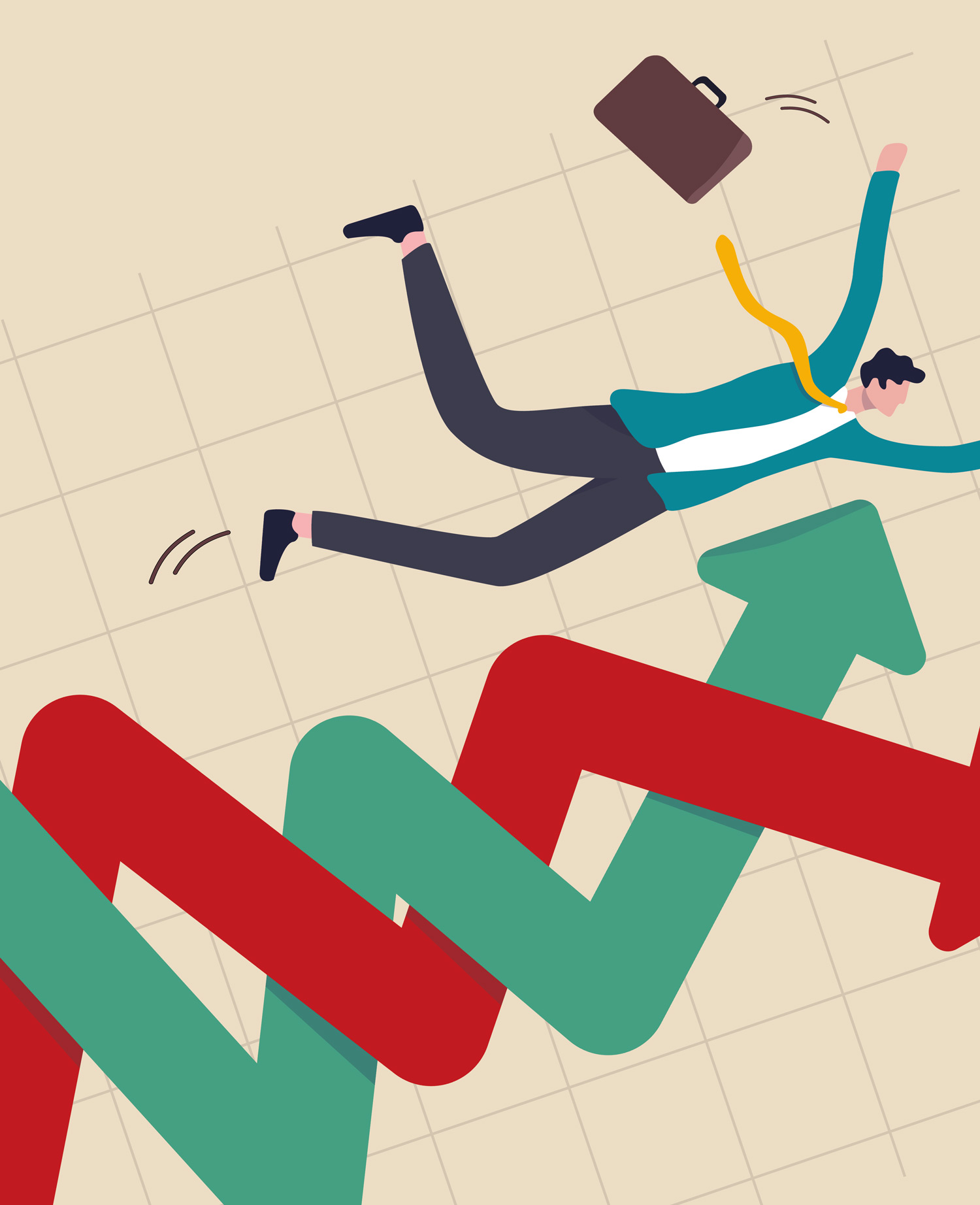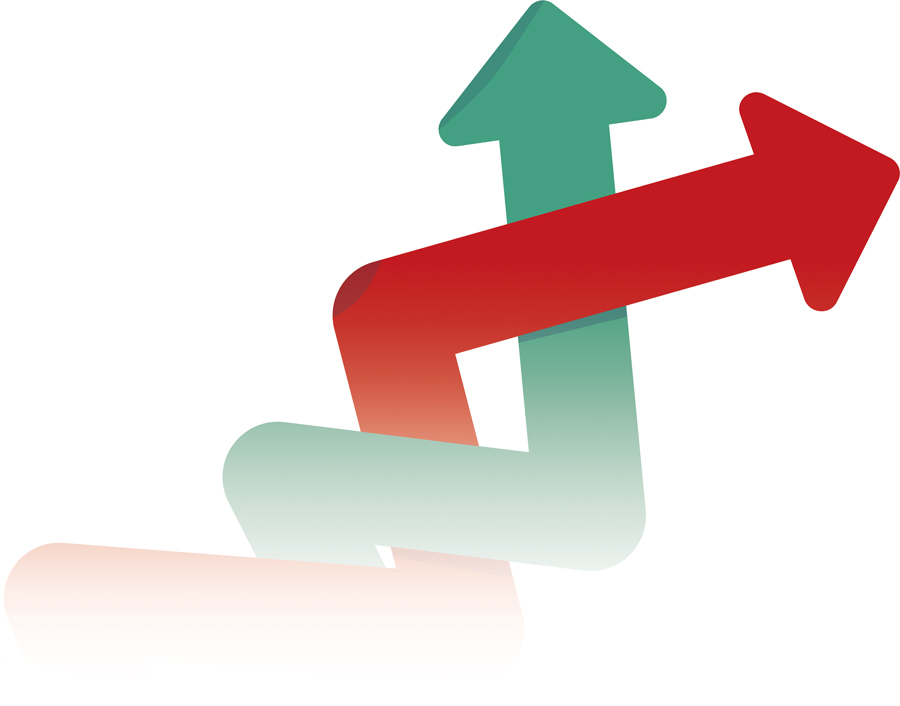
s Alaska was emerging from its longest recession on record, COVID-19 struck and delivered its devastating blow to the economy. The COVID-19 pandemic has impacted almost all the state’s industries, severely depressing revenue, employment, and consumer confidence. Now, what’s next for Alaska’s key industries? What economic forecasts are experts able—or willing—to make for 2021?
In October, the consensus among economists was that Alaska’s fate is uncertain. However, there was that ever-present cautious optimism that the state will recover slowly, but surely, from the recession—and the added burden of the pandemic.
The pandemic is having a broad-based impact, causing a considerable decline in Alaska’s overall economic activity. “There is virtually no sector of our economy that is untouched by the pandemic,” Popp says. “The only area we’re seeing positive news in jobs is the federal government because of the Census.”
In addition, tourism and tourism-adjacent businesses have been hit severely by the pandemic. Alaska’s highly seasonal economy typically has 15 percent more jobs in July than it does in January, according to Mouhcine Guettabi, associate professor of economics at UAA’s Institute of Social and Economic Research.
And the decline in travel and travel spending, which normally occurs in just three short months, has cost the state thousands of jobs. “As of September 2020, employment in leisure and hospitality is 33 percent below the same month last year,” Guettabi says. “The recovery of the sector is dependent on virus containment, financial health of the consumer at the national level, and business failure mitigation efforts. In my forecast, I predict that the leisure and hospitality sector will grow at double-digit rates, but it will still be below pre-pandemic levels.”
Manufacturing, specifically seafood processing, was also hit hard by the pandemic. Seafood processing, which represents 70 percent of all manufacturing jobs in the state, has been negatively affected by COVID-19 due to significant declines in demand. Guettabi says, “In 2021, I expect the sector to slowly start regaining the jobs lost the previous year and grow at a rate of 1.5 percent, but of course its recovery is dependent on demand from other parts of the world.”
President/CEO
Anchorage Economic Development Corporation
The oil and gas industry has pulled back significantly due to reduced demand and efforts to exercise caution and safety for its workers, according to Popp. “They are maintaining current production in a safe manner,” he says. “This was supposed to be a big year in new exploration and development spending, but that wasn’t the case.”
Fisheries is sort of a mixed bag, Fried says. They have done relatively well in some places and not so well in others. Bristol Bay, for instance, had a very good year in 2020 while places like Southeast and Prince William Sound did not.
On the flip side, the mining sector fared relatively well in 2020. The outlook for mining has been positive, which make sense considering the elevated price of gold. “It’s one of our industries that has remained quite healthy,” Fried says. “It’s just not very large; it’s not a big employer.”
In addition, the military is stable and growing in Alaska. And air cargo has done well, with international cargo being very strong, Fried says. In fact, as of the end of September 2020, 2.5 million tons of cargo had touched down at Ted Stevens Anchorage International Airport, a 13.6 percent increase over the first nine months of 2019, according to an Alaska Department of Transportation press release.
At one point, almost 70,000 people out of a workforce of 330,000 were receiving unemployment benefits in Alaska, Fried says. Near the end of 2020, 40,000 Alaskans were receiving unemployment checks, compared to about 5,000 recipients during the same period in 2019.
The 2020 unemployment numbers, Popp says, are not only staggering but unprecedented in the modern history of Alaska. He explains: “The ‘80s was terrible, but those job losses were spread out over two years. This is the worst year for unemployment numbers in the last twenty years.”
Tremendous economic uncertainty exists in Alaska, according to Mark Edwards, executive vice president, chief credit officer, and bank economist with Northrim Bank. That uncertainty reduces consumer confidence and slows investment decisions.
In a virtual “Alaska Economic Update 2020” presentation in October, Edwards reported that he expects low interest rates to continue over the next several years, as well as higher-than-normal unemployment and low inflation. And an increasing trend toward a remote workforce will translate into reduced demand for office space, lower demand for oil, less pollution and traffic congestion, and reduced tax collection from public transportation. However, Edwards is looking forward. “I, personally, believe that we will get through this challenge like so many that we have faced in the past,” he says.
That, obviously, was not the case. “That last recession—the second-worst one Alaska has experienced—pushed us back to our 2010 levels,” Fried says. “So, when we started to recover in 2019 with a modest 0.5 percent growth, we still had a lot of ground to cover to get back to our previous high of 2015. If you just look at the 2020 levels, it will look like we’ll be slipping back to the 2004/2005 levels. On a percent basis, we’ve slipped back—so far this year—7 or 8 percent. We’re getting a double whammy.”
Based on numbers for September, Alaska’s employment is still running 11 percent below a year ago (at 37,600 job losses in September). For every industry, except for the federal government, there are job losses.
Similarly, Guettabi says Alaska’s economy was on a path to emerge from the recession in 2019 when it had a modest 0.5 percent growth. In 2020, pre-pandemic, the economy was expected to grow at the same rate it did in 2019. “The pandemic has caused an unprecedented shock to the labor market, businesses, and general public,” he says. “Based on my forecast, I think the recovery from this shock will be a slow one, and we will still be below pre-pandemic levels at the end of 2022.”
In 2021, Guettabi expects the economy to slowly start regaining jobs lost the previous year and grow at a rate of 2.2 percent. “There is clearly a tremendous amount of uncertainty due to the resurgence of the virus, lack of clarity on the timing of the fiscal packages, and the continued hesitation surrounding travel,” he says.
Labor Economist
Department of Labor and Workforce Development
The national and global economies will also be important factors in Alaska’s fate, Fried says. So will consumer sentiment, which will affect local consumption.
Alaska was just beginning to emerge from recession when COVID-19 struck. It was in a vastly different place than the rest of the country, which was doing well, Fried says. The pandemic maybe hit Alaska a little harder, partially because of the seasonality of the state’s employment and the timing of COVID-19. “So you would think that Alaska’s recovery would be slower than the rest of the country’s,” he says.
He adds: “All of that will help to turn the corner, but it will be a long road ahead. All of this is also predicated on the idea that a vaccine is being deployed by early next spring.”
Popp also expresses positivity about how tourism will perform in 2021, following 2020’s “lost season.” While local businesses are hopeful that 2021 will be a better year, no one is thinking exuberantly, he says.
However, the cruise industry is bullish for 2021, Popp says. Alaska is showing up as a highly ranked destination of interest. “That will work in our favor,” he says. “Domestic travel is going to come back more quickly than foreign travel.”
Indeed, the winds of economic change are shifting for the cruise industry. The Centers for Disease Control and Prevention lifted its no sail order in October for cruise ships sailing in US waters. The order, which originally went into effect on March 14, 2020, has been replaced with a conditional sailing order that requires a phased approach to resuming passenger operations in US waters. Cruise ships will have to satisfy multiple stipulations before passengers will be allowed back on board.
Edwards of Northrim Bank identifies several positive aspects about Alaska and its economy. For instance, he says Alaska’s housing market is stable and even up, with average sales prices increasing from 4.3 percent to 11 percent around the state. There is a solid amount of home improvement taking place, as people convert to home offices and spend more time in quarantine. Historically low interest rates have led to an increase in home refinance activity. Also, the state’s delinquency and foreclosure rates are better than elsewhere in the country.
As a general note, Edwards says this might be a good time for businesses to make key investments in new locations. They could also consider hiring key employees that are suddenly available.
He adds that oil exploration spending could be a major boost for the state, generating much-needed investment and jobs. For example, the US Department of the Interior recently signed a record of decision on the final environmental impact statement for ConocoPhillips Alaska’s proposed Willow Master Development Plan. This allows for the construction of up to three drill sites, along with associated processing and support facilities. The project, which could produce 590 million barrels of oil over its anticipated 30-year life, is expected to create more than 1,000 jobs during peak construction and more than 400 jobs during operations.
